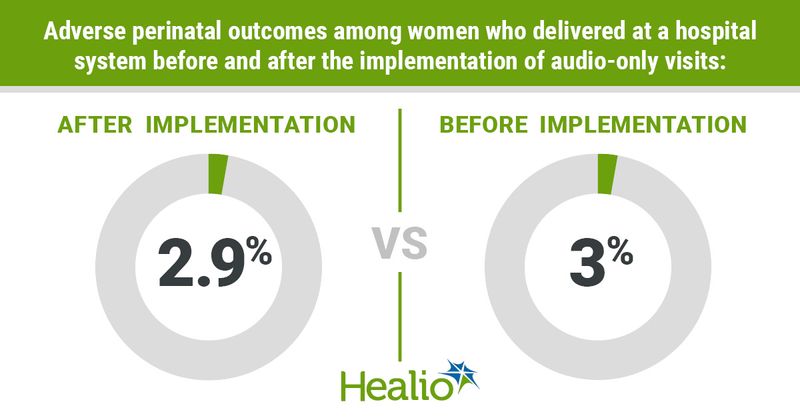Audio-only prenatal visits increase attendance, but not adverse outcomes
Researchers observed a higher attendance rate for prenatal visits and similar perinatal outcomes among patients who delivered at a hospital system after the implementation of audio-only visits in 2020 vs. those who attended the same facility in 2019.
“Before the pandemic, state and federal regulatory requirements did not support the use of an audio-only platform,” Elaine L. Duryea, MD, assistant professor in the department of obstetrics and gynecology at the University of Texas Southwestern Medical Center, and colleagues wrote.

These regulatory requirements create barriers to care, they said.
“Video visits require both the clinician and patient to possess specific hardware, internet bandwidth and technological literacy,” the researchers wrote. “Given that 50% of women in the U.S. rely on Medicaid for coverage of prenatal and delivery services, a significant portion may not be able to adequately participate in prenatal care using video-based platforms.”
Duryea and colleagues conducted a retrospective cohort study that compared perinatal outcomes among 6,559 women (mean age, 27.8 years; Black, 16.3%) who delivered in 2019 with 6,048 women (mean age, 27.7 years; Black, 18%) who delivered in 2020. All deliveries took place at the Parkland Health and Hospital System in Dallas, which the researchers wrote serves “the vulnerable obstetric population of the county via a high-volume prenatal clinic system and public maternity hospital.”
The study’s primary outcome measure was a composite of placental abruption, stillbirth, neonatal ICU admission among infants born full term as well as umbilical cord blood pH less than 7.
The researchers reported that women who delivered in 2020 attended a mean of 9.8 visits while women who delivered in 2019 attended a mean of 9.4 visits (P < .001). Overall, in 2020, 67.2% women had at least one audio-only prenatal visit and 20.1% had three or more audio-only visits.
The composite outcome occurred in 2.9% of women who delivered in 2020 vs. 3% of women who delivered in 2019, which was not statistically significant, according to the researchers.
“Audio-only virtual visits provided necessary and complete care in a population without ready access to the resources and technologic literacy necessary to engage in video visits,” the researchers wrote. “Despite this, we face a dilemma: audio-only virtual prenatal visits are currently deemed acceptable as emergency measures, but not as complete visits for the sake of reimbursement.”
Nonetheless, they wrote that their findings “suggest safety, efficacy and legitimacy of a synchronous, audio-only virtual prenatal care platform and advocate for equity in reimbursement in parallel to in-person visits.”

